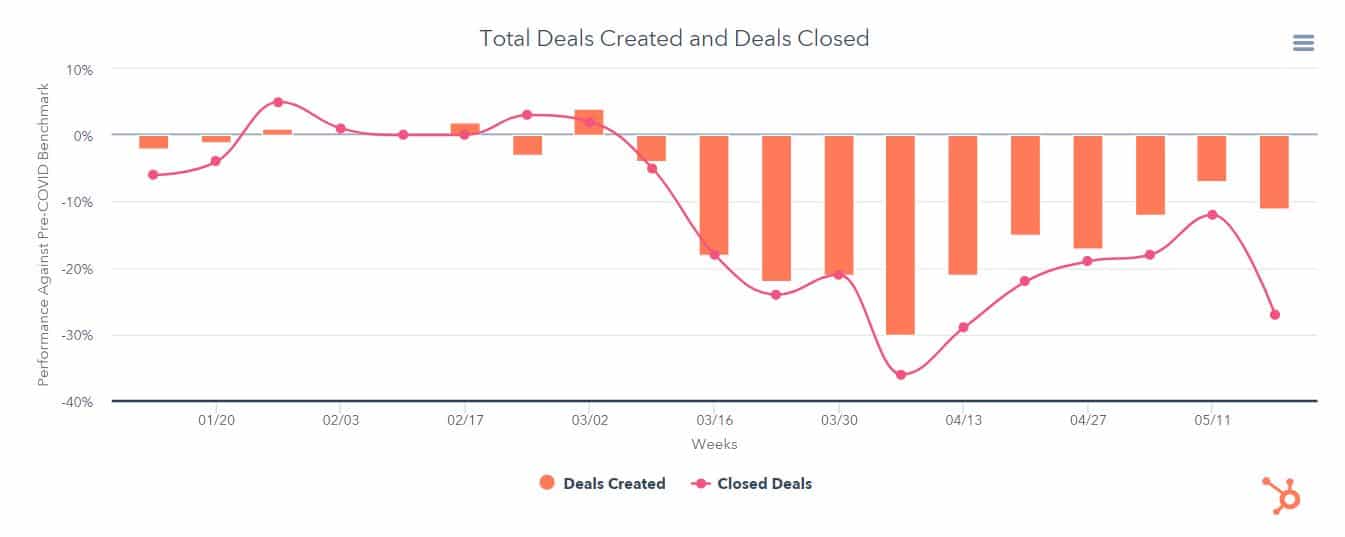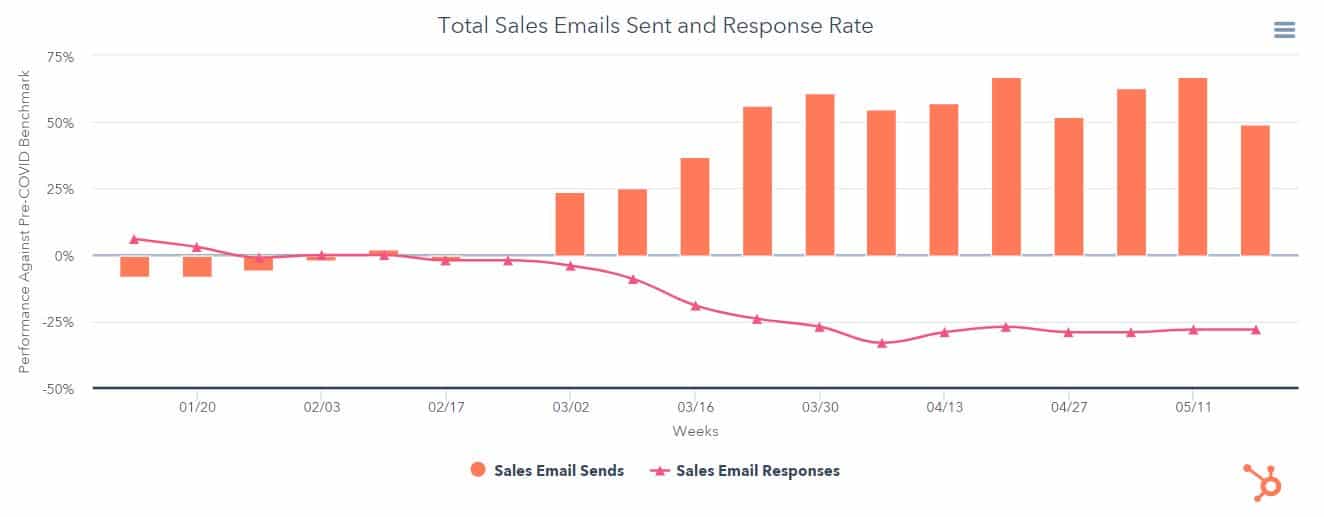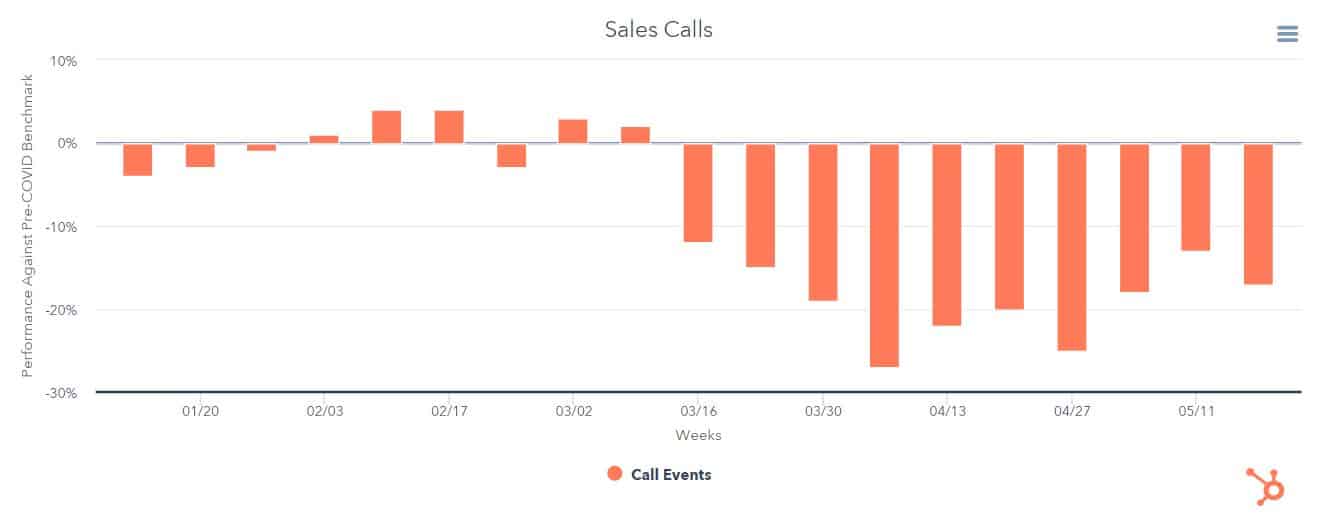HubSpot releases post-COVID-19 sales metric benchmarks
CRM and marketing platform Hubspot has released data from its customer base of 70,000+ customers demonstrating how business metrics have shifted due to the impact of COVID-19.

CRM and marketing platform Hubspot has released data from its customer base of 70,000+ customers demonstrating how business metrics have shifted due to the impact of COVID-19.
Hubspot’s COVID-19 Marketing and Sales Benchmark Data compares key business metric performance tracked by its users before the COVID-19 outbreak to results logged since the pandemic.
“We hope this establishes a useful benchmark to measure your business against, and serve as an indicator of when changes to your marketing and sales approach should be made to meet new challenges,” Hubspot said.
COVID-19 sales metric benchmarks tracked against the pre-COVID-19 results include:
- Sales deals created and deals closed
- Sales emails sent and response rate
- Sales calls made
- Marketing emails sent and open rate
- Website traffic performance
- CRM contact growth.
Each sales metric can be filtered by region, company size and industry.

As expected, Hubspot users have seen a decrease in the number of sales deals created and deals closed, with the lowest point falling at the start of April with 30 per cent less sales deals created compared to the pre-COVID-19 activity benchmark, and nearly 40 per cent less sales deals closed.
COVID-19 has also seen sales teams use email communication over sales calls, with HubSpot recording a nearly 75 per cent increase in sales emails during April, but about a 25 per cent decline in sales calls.

The response rate to sales emails declined by around 25 pe cent during April. This could point to a lack of interest due to the impacts of COVID-19 or an adverse reaction from customers receiving an increased number of sales emails.
The low sales email response rate could also be a reason why sales calls have declined since the COVID-19 pandemic, with fewer leads to follow up.

Other factors could include sales teams feeling that now is not the right time to prospect. But it is interesting that a stable or higher number of sales calls hasn’t been reflected in HubSpot’s results by sales teams reaching out to their existing clients to reconfirm or re-establish relationships.
Marketing emails also increased during March and April, and experienced a higher than average open rate (up to 20 per cent higher), indicating that customers have responded better to indirect sales since the pandemic.
Website traffic for Hubspot users also increased, up to 24 per cent higher than normal in mid-April, whereas contact growth peaked in mid-March with the average number of contacts added into the CRM being 86 per cent higher than the pre-COVID-19 benchmark.
Delve into HubSpot’s COVID-19 sales metric benchmarks by visiting the website and filtering by region, company size and industry: COVID-19 Marketing and Sales Benchmark Data.



